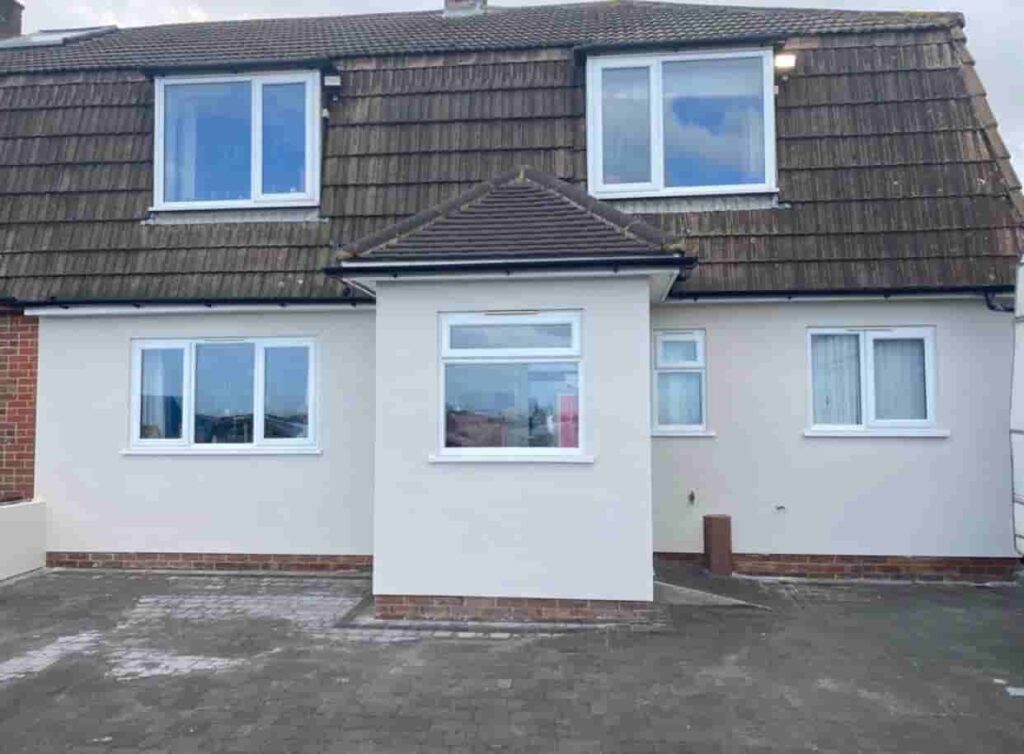Introduction: Proper drainage is essential for maintaining the integrity and longevity of your roof. At Brownsover Roofing Repairs, we understand the importance of effective water management to prevent water damage, leaks, and premature wear. Here’s a comprehensive guide on ensuring proper drainage with your new roof installation.
1. Understanding Roof Drainage Systems
Gutters and Downspouts: Gutters collect rainwater from the roof and direct it to downspouts, which carry the water safely away from the building’s foundation.
Roof Slope: The slope or pitch of the roof determines how quickly water runs off the surface. Steeper slopes facilitate faster drainage, while low-slope roofs require special considerations to prevent water pooling.
2. Key Considerations for Proper Roof Drainage
1. Design and Planning:
- Roof Pitch: Ensure your roof has an adequate pitch to facilitate water runoff. Steeper pitches are generally more effective at draining water quickly.
- Gutter Size and Placement: Install appropriately sized gutters for your roof area and ensure they are positioned to capture water effectively from all roof sections.
2. Proper Installation:
- Flashing: Proper flashing installation around roof penetrations (such as chimneys, vents, and skylights) is crucial to prevent water infiltration at vulnerable points.
- Seamless Gutters: Opt for seamless gutters to minimise potential leakage points.
3. Maintenance and Cleaning:
- Regular Inspection: Schedule regular inspections to check for debris buildup, damage, or signs of clogging in gutters and downspouts.
- Clear Debris: Clean gutters and downspouts regularly, especially after heavy storms or during autumn when leaves are falling.
4. Downspout Extensions:
- Extension Length: Ensure downspouts extend at least 2 metres from the building to prevent water pooling near the foundation.
- Splash Blocks: Use splash blocks or gutter extensions to direct water away from the foundation and landscaping.
3. Choosing the Right Materials
- Gutter Materials: Select durable materials such as aluminium, steel, or vinyl for gutters that can withstand weather conditions and minimise corrosion.
- Roofing Materials: Certain roofing materials, such as metal and asphalt shingles, are designed to enhance water shedding and improve overall drainage.
4. Consultation with Roofing Professionals
- Expert Advice: Work with experienced roofing professionals like Brownsover Roofing Repairs to assess your roof’s drainage needs and recommend the best solutions.
- Custom Solutions: Professionals can customise drainage systems to fit your roof’s unique characteristics and local climate conditions.
Conclusion: Ensuring proper drainage with your new roof protects your home from water damage and maintains its structural integrity. By understanding the principles of roof drainage systems, planning for effective installation, and maintaining regular inspections and cleaning, you can prolong the lifespan of your roof and avoid costly repairs.
Call us on: 01788 221797
Click here to find out more about Brownsover Roofing Repairs
Click here to complete our contact form and see how we can help you with your roofing needs.

